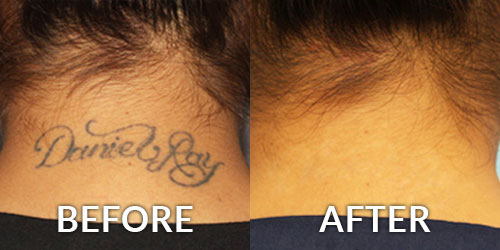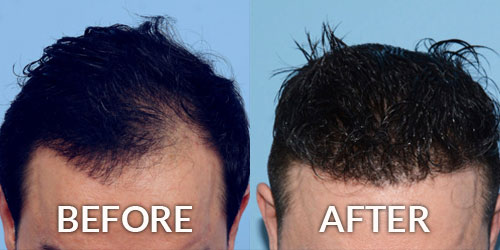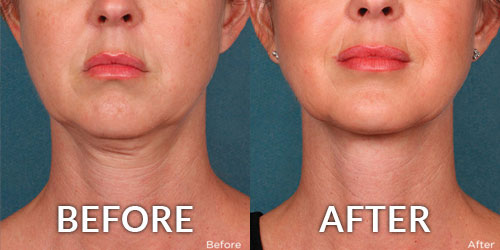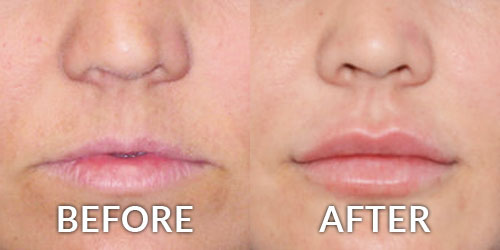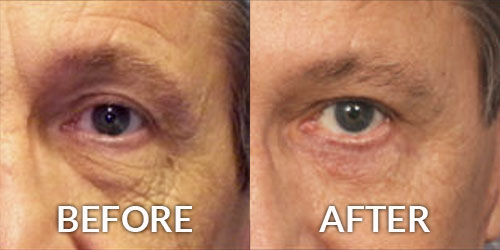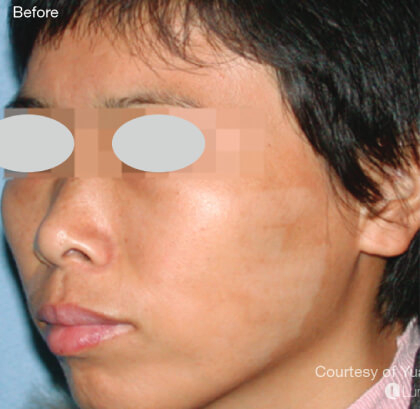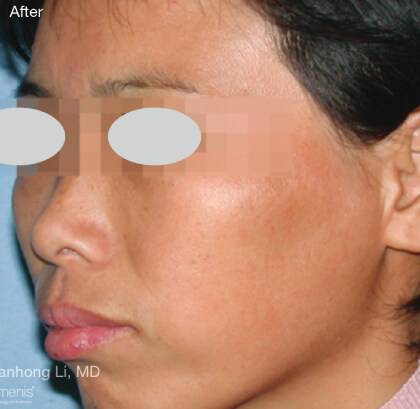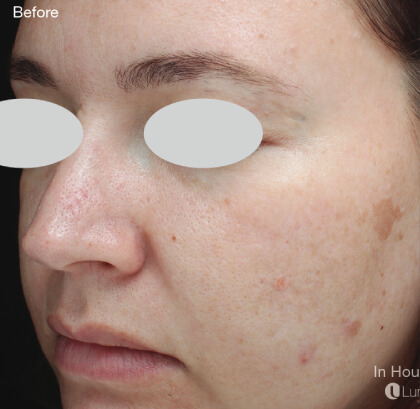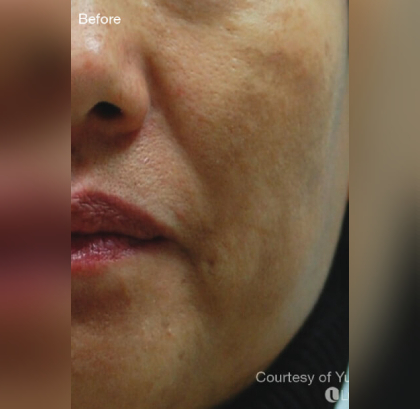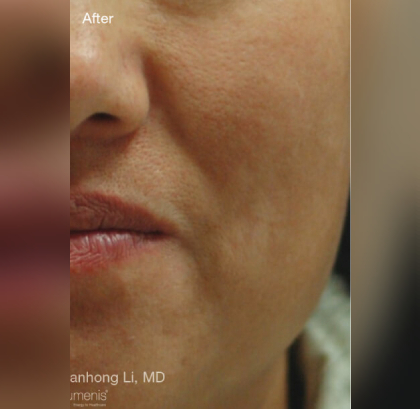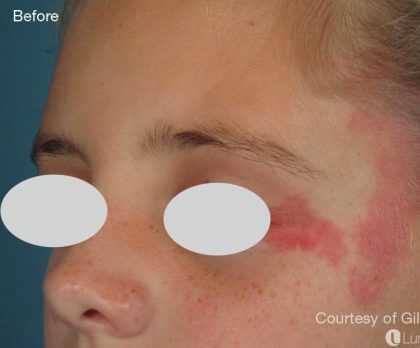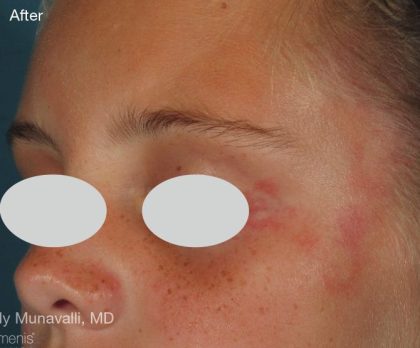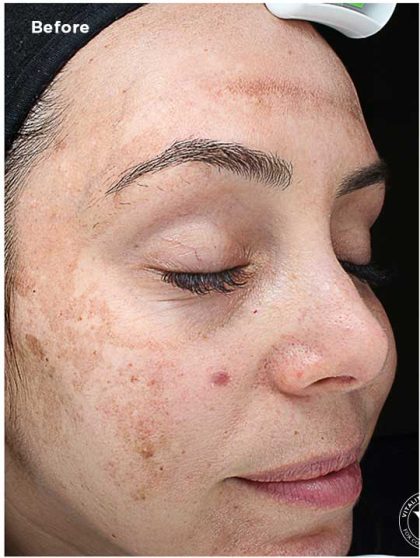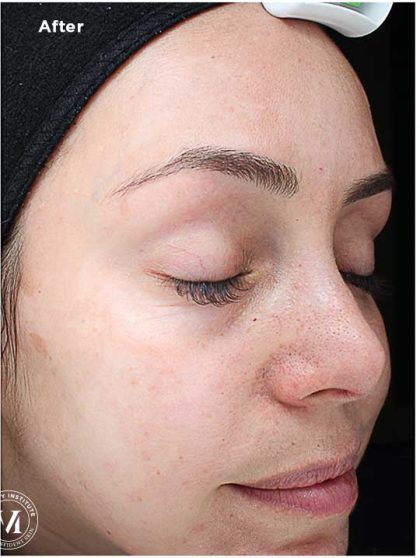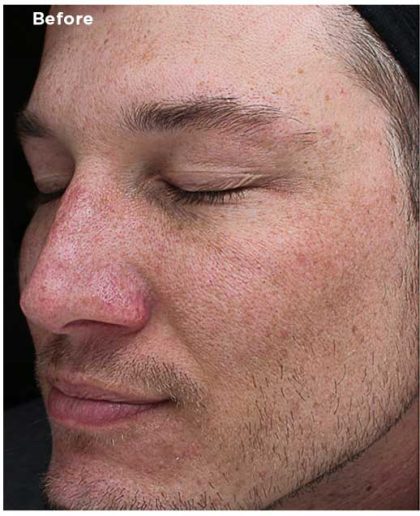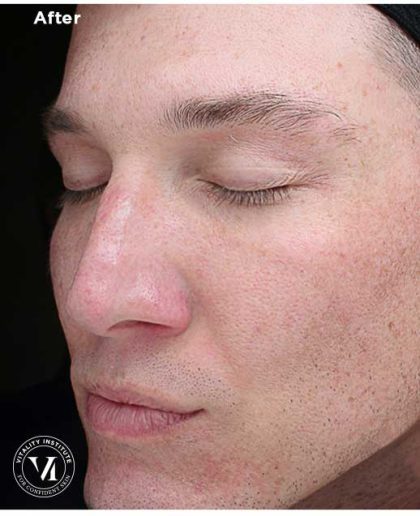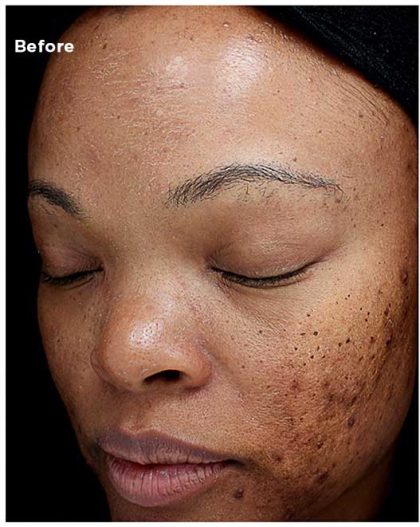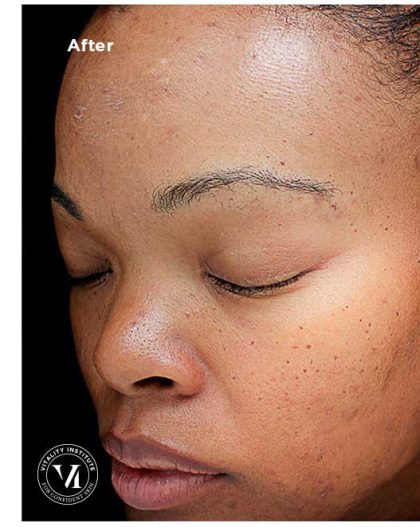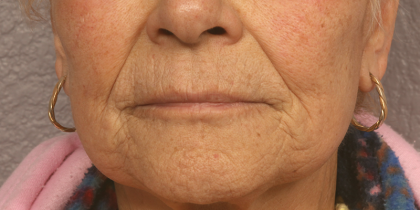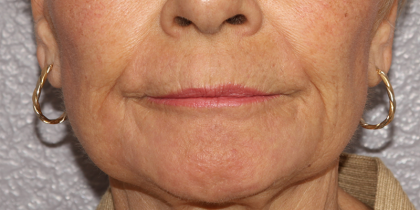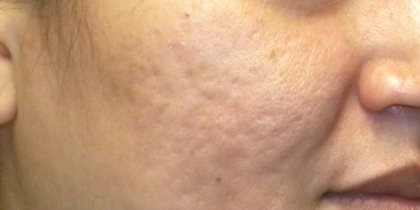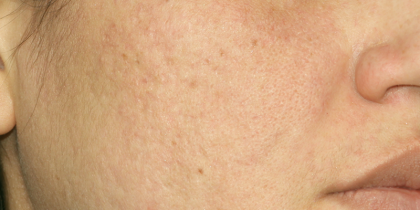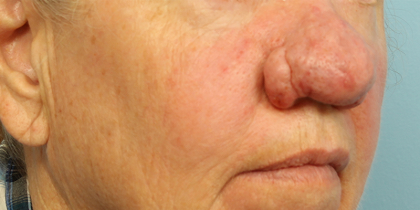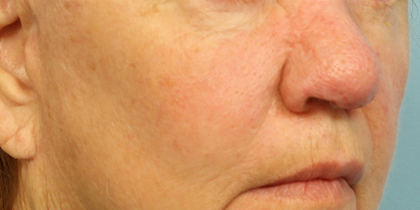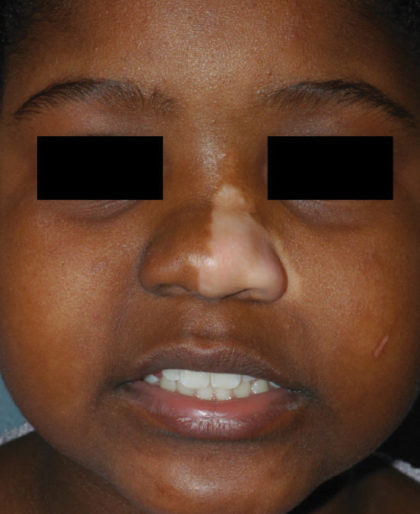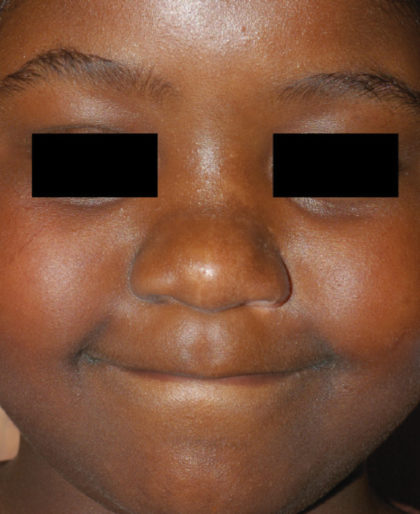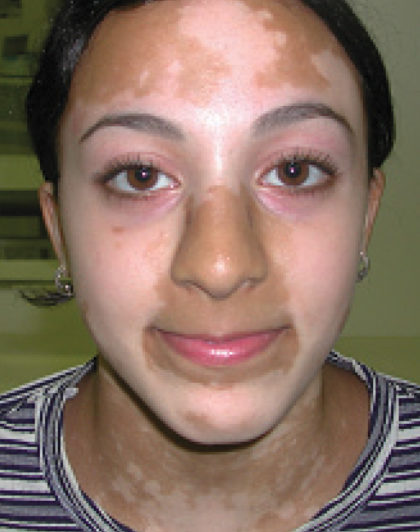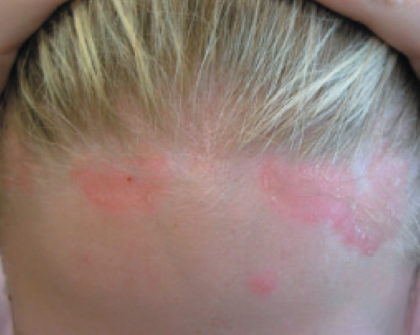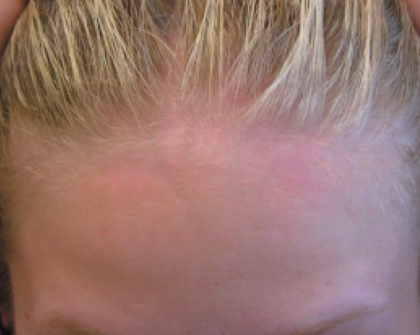Pigment Issues
Consultations offered at our two convenient locations in Phoenix and Scottsdale

A pigment issue is characterized by skin discoloration. This can arise due to chronic sun damage due to exposure, hormonal changes, or as a result of natural aging, leaving unwanted blemishes and textural issues that take away from one’s natural beauty. Often called hyperpigmentation, these cosmetic irregularities can be benign or coexist with another condition, like acne, for example. Some conditions are simply genetic, like freckles, whereas others may become more noticeable due to injury and/or inflammation. Regardless of the issue at hand, there are a variety of ways to gently treat the skin and revive the clearer, more even complexion you desire.
If you feel that your pigment issues have held you back from feeling confident and comfortable in your skin, get in touch with Phoenix Skin Medical Surgical Group. Our team consists of experienced doctors, aestheticians, and physician assistants who utilize the most advanced technologies that target the root cause of hyperpigmentation, providing lasting results to patients.
To get a comprehensive dermatologist exam at one of our facilities, call our Phoenix location at (602) 222-9111 or our Scottsdale office at (480) 473-9111. You can also inquire about a consultation online, and we will get back to you as soon as we can.
Contents
Common Pigment Issues
Skin’s overall pigmentation, or coloring, is caused by our skin’s production of melanin. The more melanin produced, the darker the pigment of your skin, or vice versa. Some skin conditions occur because the body produces either too much melanin (hyperpigmentation) or too little (hypopigmentation). Ultimately, the skin experiences this due to damage to the cells that produce melanin called melanocytes. These cells are housed deep within the epidermis of the skin, the first layer, so pigment issues can develop rather easily. Here are some of the more prevalent issues we see here at Phoenix Skin:
Birthmarks
Most birthmarks are non-cancerous skin discolorations that appear at birth or a few weeks following birth. If you or a loved one has any of the birthmarks described below, we recommend an in-office examination to ensure the birthmark does not pose a health risk. Ranging in color from white to tan to blue, some pigmented birthmarks have a higher chance of becoming melanoma due to the high number of melanocytes. (1) Pigmented birthmarks include Mongolian spots, cafe-au-lait spots, and typical moles.
Before and After Photos
Hemangiomas
Hemangiomas are caused by clusters of red or purplish blood vessels on or under the skin and can be flat or elevated. If located near a vital structure such as the nose, mouth, or eyes, they can cause problems with daily functions because the hemangioma grows. For this reason, we recommend oral and topical treatment and surgical or laser removal. At Phoenix Skin, we recommend IPL Photorejuvenation as a gentle, yet effective way to treat vascular abnormalities. IPL, (intense pulsed light), utilizes multiple light wavelengths to target the red pigments within the blood vessels of the hemangioma. As these pulses of light come into contact with the epidermis, they destroy the targeted pigment using a process called thermocoagulation. (3)
Port-Wine Stain
Abnormal development of blood vessels (capillaries) can cause flat, colored marks (pink, red, or purple) known as port-wine stains. We often treat port-wine stains for cosmetic reasons or if they are located on the eyelids. Although these are also vascular malformations, they are not considered vascular tumors like hemangiomas are. (2) Since they cannot be surgically removed, they are best treated with IPL sessions.
Before and After Photos
Melasma
Melasma is a common skin disorder characterized by patches of darker skin that appear on areas of the face exposed to the sun. It is often referred to as hormonal pigmentation or the mask of pregnancy because pregnancy hormones and certain birth control pills, paired with UVA exposure, can cause it to develop. Melasma responds to topical fading agents as well as laser treatment with PicoSure Focus. As a laser, it is specifically designed to remove tattoo ink deep within the dermis, so it can efficiently remove more superficial excess melanin pigment that causes melasma. It also has the added benefit of smoothing out the skin and reducing lines and wrinkles with increased collagen production. This laser is versatile and safe enough for all skin types and does not pose a risk of post-inflammatory hyperpigmentation, like other lasers. After treatment with PicoSure Focus, patients can reduce recurrence by applying daily, medical-grade sunscreen.
Clinicians can also apply the VI peel, a medium-strength chemical peel that allows for the removal of the epidermal layer of skin and the topmost section of the dermis. About 7 days after treatment, those struggling with melasma will be able to reveal fresh, renewed, and brighter skin.
Before and After Photos
Sun Pigmentation
Age spots (also known as sun spots, brown spots, or liver spots) are brown discolorations that appear on the surface of the skin in areas such as the face, neck, hands, arms, and shoulders. The age spots commonly occur as the result of UVA exposure to the sun or using commercial tanning beds. Recommended treatments for sun pigmentation are IPL Photofacial, Active FX Laser Treatment, PicoSure Focus, VI Peels, daily product regimens, and medical-grade topical treatments.
Before and After Photos
Vitiligo
Patients with vitiligo have white patches on the skin due to the increased destruction of melanocytes on their skin. It is considered an autoimmune disorder since patients’ own immune system attacks these cells. As a complex issue, the preferred method of treatment for vitiligo is the XTRAC laser due to its reliable safety profile and effectiveness. Unlike more invasive treatments that involve inhibiting the immune system, this laser targets and stimulates the melanocytes to regulate their production of melanin. The wavelength of the XTRAC laser can also treat plaque psoriasis, so it is both a cosmetic and medical device.
Before and After Photos
Candidates
If you have an active infection, eczema, or acne, your clinician may want to clear up your condition with an alternative treatment. Some pigment can worsen different types of melasma, so there are different options to discuss during your appointment.
Personal Consultation
During your consultation at Phoenix Skin, your clinician will evaluate your skin condition and determine the best approach to reduce the appearance of unwanted patches of discoloration. We will ask you about your medical history, topicals/medication you may have tried, level of sun exposure, and more. We may also take a close look at the lesion/s to determine the type of skin irregularity it is and discuss your options for removal. Certain treatments, like IPL and XTRAC laser procedures, will take a series of sessions, so your clinician will outline their customized plan for your particular case.
Get started today by calling Phoenix Skin at (602) 222-9111 (Phoenix) or (480) 473-9111 (Scottsdale). You can also reach out with any questions or a request for a consultation with our online form. You can attain the healthiest-looking, most revitalized skin with our personalized care.
Cost of Skin Pigment Treatment in Phoenix
The cost of your treatment will depend on the number of appointments and sessions you will need to achieve the desired results. Some insurance plans may provide some coverage for certain conditions, like vitiligo. For the most part, treatment for pigment issues is purely cosmetic, and your clinician will give you a total cost estimate during your consultation. For a more affordable approach, please ask us about our financing options. We aim to make our treatments and procedures cost-effective for as many patients as possible.
If you would like to get familiar with our other services, read more about them in our blog.
FAQ
What causes skin pigment issues?
The root causes of skin pigment issues are varied. Sometimes, they are birthmarks that are present from birth. Other times, repeated exposure to the sun, certain medications, and coexisting conditions (such as autoimmune conditions like type 1 diabetes or lupus) can worsen hypopigmentation or hyperpigmentation. Consulting an experienced dermatologist is essential to find the right treatment for your skin issue.
How do I know if a skin pigment issue is skin cancer?
There is no definitive way to know if a pigment issue is skin cancer without proper evaluation by a physician. Still, it is best to keep an eye out for changing skin lesions. If your birthmark or sun spot has asymmetrical borders, has multiple colors within it, or appears to be getting larger, schedule an appointment with a dermatologist.
How do lasers treat skin pigment issues?
Lasers and light-based treatments specifically target abnormal melanin and break down this pigment, allowing the body to metabolize and remove it from the epidermis or dermis. Some laser treatments can target and destroy the tiny blood vessels within hemangiomas, port-wine stains, and other vascular lesions, leading to more even-toned skin.
References
- Shreberk-Hassidim R, Ostrowski SM, Fisher DE. The Complex Interplay between Nevi and Melanoma: Risk Factors and Precursors. International Journal of Molecular Sciences. 2023;24(4):3541. doi:https://doi.org/10.3390/ijms24043541
- Latrive A, Teixeira LRC, Gomes ASL, Zezell DM. Characterization of skin Port-Wine Stain and Hemangioma vascular lesions using Doppler OCT. Skin research and technology: official journal of International Society for Bioengineering and the Skin (ISBS) [and] International Society for Digital Imaging of Skin (ISDIS) [and] International Society for Skin Imaging (ISSI). 2016;22(2):223-229. doi:https://doi.org/10.1111/srt.12253
- Gade A, Vasile GF, Rubenstein R. Intense Pulsed Light (IPL) Therapy. PubMed. Published 2022. https://www.ncbi.nlm.nih.gov/books/NBK580525/



